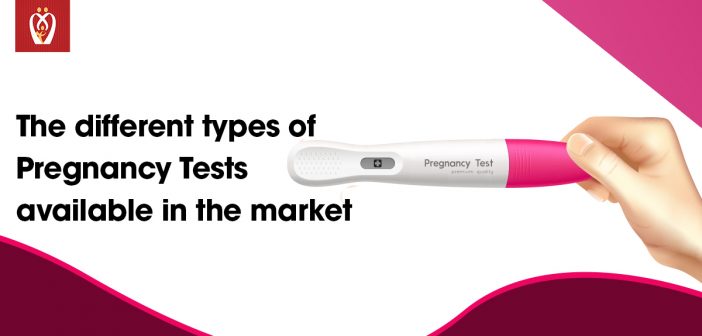Human chorionic gonadotropin (hCG) is only produced in a woman’s body during pregnancy, and pregnancy tests look for it. These tests can detect human chorionic gonadotropin (hCG) in your urine or blood. Urine pregnancy tests are inexpensive and popular at home. Furthermore, when performed correctly, home pregnancy tests are pretty accurate.
So, what exactly is a pregnancy test for?
To detect if you’re pregnant, a pregnancy test measures the amount of human chorionic gonadotropin (hCG) in your body. Your body begins to change at the start of pregnancy to help collect cells that will eventually become your baby. The production of human chorionic gonadotropin (hCG) is a rapid process. This molecule is only present in pregnant women, and it starts to form around ten days after conception when the fertilised egg implants in the uterus (womb).
The two most frequent types of pregnancy testing are urine and blood tests. This type of test is available over-the-counter (without a doctor’s prescription) and in various pricing ranges. Pregnancy tests are done in your healthcare professional’s office.
A pregnancy test may be used for a variety of reasons. If you have any questions regarding your test results, regardless of the cause, the best thing you can do is contact your healthcare provider. Pregnancy can also be confirmed via ultrasound. Later in pregnancy, an ultrasound is used to examine your baby and check that the development timeline matches the dates of your conception and missed period.
What is a pregnancy test’s procedure?
When you take a pregnancy test, the amount of human chorionic gonadotropin (hCG) in your body is measured. hCG can be found in both urine and blood. On the other hand, early pregnancy tests may be dangerous because this hormone takes time to build up in your body. During early pregnancy, your body will create more hCG every day. As the weeks pass, your body will produce more and more hCG, increasing the chances of a positive pregnancy test.
Pregnancy tests measure how much hCG is present in your urine or blood. In a urine test, hCG is detected using a piece of reactive paper. As a result, a plus sign, numerous vertical lines, or even the term “pregnant” may appear. Depending on the test, a positive influence will manifest itself in a variety of ways. Read the directions that came with the test to see what a positive result looks like. During the test, there will be a control window that appears first. The test is currently running if you see a sign in this window. Keep in mind that different brands of tests will take different amounts of time to process.
If you undergo a blood test, your physician will take a sample of your blood and send it to a lab. The lab will determine the level of hCG in your blood.
What are the different types of pregnancy tests?
The two most frequent types of pregnancy testing are urine and blood tests. Urine tests are usually done at home, but they can also be done at your healthcare provider’s office, whereas blood tests are done by your healthcare professional.
An at-home pregnancy test
An at-home test checks for hCG in your urine in most circumstances. At-home pregnancy tests, according to most manufacturers, are 99 per cent accurate when used as instructed. The accuracy rate of urine pregnancy tests performed in a doctor’s office is similar to this. Most pharmacies and supermarket stores offer these tests without a prescription. However, they may take a different amount of time depending on the brand. Make sure you read the instructions before taking these tests.
During an at-home pregnancy test, you’ll typically place one to several drops of urine on a prepared chemical strip or place the strip in the urine stream. The strip was created to detect human chorionic gonadotropin (hCG). For several of these tests, hCG can be seen in your urine about ten days after conception. Taking it after your missed period, on the other hand, reduces the possibility of a false-negative result.
There are a few things to keep in mind when utilising a home pregnancy test, including:
- Use your first-morning pee whenever possible. This is the time of day when your hCG levels are at their peak and easiest to detect. If you’re going to perform it later in the day, make sure your urine has been in your bladder for at least four hours.
- Avoid ingesting significant amounts of water before taking a pregnancy test. Many people feel that this will increase the volume of pee. It will, however, dilute (thin down) your hCG levels.
- Read the directions carefully before starting the exam, and make sure you follow each step exactly.
Blood Tests
Another type of pregnancy test that can be used is a blood test. On the other hand, blood tests are rarely used because they are expensive and generally provide the same results as urine tests. A small blood sample is collected and examined at a hospital or healthcare provider’s office for this type of pregnancy test. This blood test will determine whether or not pregnancy hormone is present in your body, as well as how much of it there is.
A pregnancy blood test may be performed in rare circumstances, such as when a healthcare provider suspects a problem or when a woman is receiving infertility therapy.
These blood tests are slightly more sensitive than urine tests because they can detect deficient hCG levels. This means they can give a more specific answer between nine and twelve days after fertilisation, early in the pregnancy test. For this test, a blood sample is taken and sent to a lab for analysis. The results could take anywhere from a few hours to more than a day to show.
Your provider may use a blood test to compare hCG levels throughout the pregnancy. Your hCG levels usually double every two days during the first several weeks of pregnancy. If the levels don’t rise, it could be a sign that you’re pregnant. On the other hand, extremely high hCG levels may indicate that you’re expecting twins or that anything is wrong with your pregnancy.
Is it true that all pregnancy tests performed at home are the same?
The majority of pregnancy tests performed at home are accurate. Although the testing procedure varies from one type to the next, all pregnancy tests look for hCG in your system. Some pregnancy tests seek the hormone in your urine, while others look for it in your blood. The results of the majority of at-home testing will be the same. The sensitivity of the test, however, will be different from that of your at-home testing. Some may be more sensitive than others, resulting in a positive result – the presence of hCG in your urine – being detected sooner. For the most accurate reading, you should still wait until you’ve missed your period. At that time, all tests should be valid.




